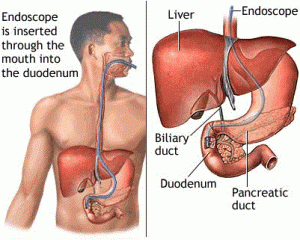To find out who can benefit from a transplant, two questions must be answered:
– Is the transplant justified?
– And if so, does the patient have priority?
1. In which cases is a liver transplant justified?
A liver transplant is considered when the liver no longer able to fulfill its vital functions.
For example:
– In the case of advanced cirrhosis (decompensated cirrhosis),
– In the case of liver cancer.
2. Who has priority?
Since there are not enough transplants, priorities need to be set: the most seriously affected people go before those who can wait. But to make the intervention successful, the general condition of the patient must allow the operation.

Too severe hepatic insufficiency increases the risk of operative and postoperative complications, and thus the chances of survival … It is considered that the transplant should be attempted if the chances of survival at 5 years are at least 50%.
In many countries, the main criteria used to objectify priorities in the case of hepatic insufficiency is the Model for End-stage Liver Disease (MELD) score, which integrates various parameters and crosses them with the origin of cirrhosis.
But this MELD score does not say everything. It can – and should – also be supplemented by expert advice, taking into account specific criteria.
A long waiting … and sometimes you get off of the list
Some people, even in decompensated cirrhosis, have difficulty accessing the transplant because other patients are in a worse situation than theirs.
The time spent on the waiting list is variable, but it can reach a year or more. Of course, careful monitoring of these people is essential (CT and MRI every three months). If their situation gets worse, then they become a priority.
But with the new treatments for hepatitis C, another phenomenon may occur: some people eligible for a liver transplant and who have managed to get rid of the virus see their situation improve to the point that they are no longer considered as transplant candidates and leave the waiting list.
Strategies to deal with the shortage
To face the lack of grafts taken from people in brain death, several strategies are possible. Because of the very high regenerative capacity of the liver, a part of the organ can be taken from a living donor, or a liver can be divided between two recipients…
The living donor
Organ donation by a living donor is mostly done for the kidney. But one can also consider a liver sample on a living donor. Since the liver is unique in its regenerative properties, it is possible to take a part of the liver from a healthy donor and transplant it into the patient with liver disease treatment. Over time, the partial liver transplant will develop into a fully functioning liver. The spouse of the recipient, his brothers or sisters, sons or daughters, grandparents, uncles or aunts, first cousins, and first cousins and the spouse of his father or mother may be authorized to lend.
The split of the liver
It is possible to divide a liver in two parts and implant each of these parts on a different recipient. Unfortunately, this split is rarely possible among two adults: the part of the left liver, very small, can be grafted effectively only on a child or a very small adult.
The domino transplant
In the case of hereditary neurological disease related to the liver, a ”domino” transplant can be performed. A person with this disease must ultimately benefit from an organ donation. But its own liver, although carrying the genetic anomaly, can be implanted on another person who urgently needs a transplant. The disease can then appear in the recipient, but many years later only.
The positive donor for hepatitis C virus
Now, with the progress of hepatitis C treatments, it is possible to transplant otherwise healthy HCV infected livers into HCV infected recipients. In this case, the patient will be treated for the HCV infection post-transplant, resulting in a virus-free liver in a virus-free patient.
Daily life
Before the transplant, the waiting period can be extremely distressing for both patient and surroundings. We do not dare to leave, we have the phone permanently at hand, and we can feel helpless in the face of the advance of the disease. It is important not to be alone during these moments of doubt, and to be able to share them with third parties, psychologists, caregivers or other patients.
The period preceding the operation can also be used to focus on the social situation of the person awaiting transplant, by meeting with a social worker from the hospital or transplant center, as soon as the pre- graft. You can also talk to a local social worker (Municipal Social Action Center, County Council, Social Security, etc.) present in some associations. It is a useful way not to remain inactive while facing the disease, and to project yourself into post-transplant.
After the operation, a completely different period of life begins, always punctuated by medical monitoring and medication.
Diet
After a liver transplant, you can regain an almost normal diet. However, you must be extremely vigilant to prevent any food infection, because consequences can be particularly serious on a person under anti-rejection treatment.
Your diet should be varied, balanced and as regular as possible, because of the constraints posed by the different medications (3 meals a day, and possibly 1 or 2 snacks). It should also consider antirejection drugs, including corticosteroids that promote fluid retention, weight gain.
